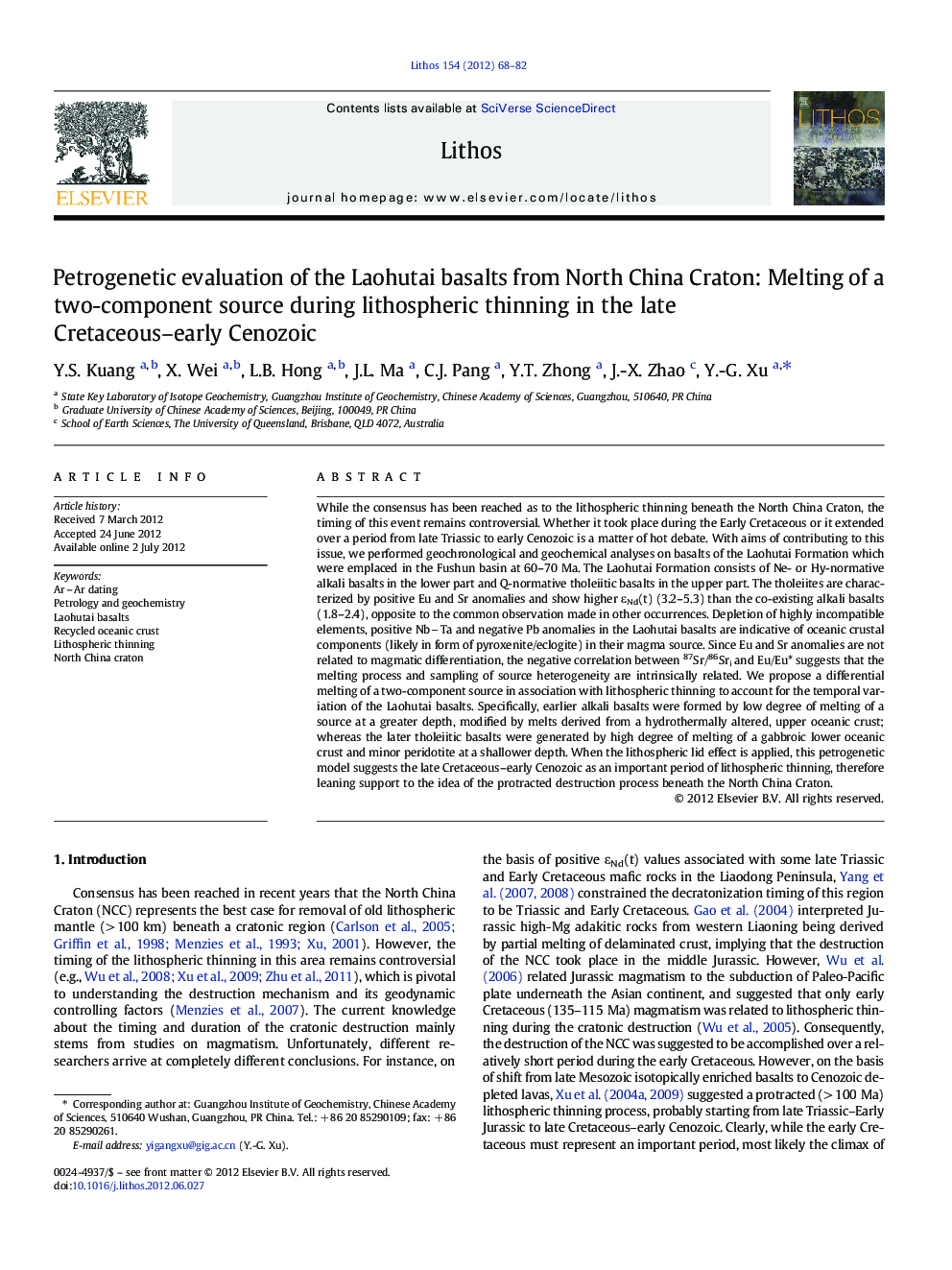| کد مقاله | کد نشریه | سال انتشار | مقاله انگلیسی | نسخه تمام متن |
|---|---|---|---|---|
| 4716397 | 1638699 | 2012 | 15 صفحه PDF | دانلود رایگان |

While the consensus has been reached as to the lithospheric thinning beneath the North China Craton, the timing of this event remains controversial. Whether it took place during the Early Cretaceous or it extended over a period from late Triassic to early Cenozoic is a matter of hot debate. With aims of contributing to this issue, we performed geochronological and geochemical analyses on basalts of the Laohutai Formation which were emplaced in the Fushun basin at 60–70 Ma. The Laohutai Formation consists of Ne- or Hy-normative alkali basalts in the lower part and Q-normative tholeiitic basalts in the upper part. The tholeiites are characterized by positive Eu and Sr anomalies and show higher εNd(t) (3.2–5.3) than the co-existing alkali basalts (1.8–2.4), opposite to the common observation made in other occurrences. Depletion of highly incompatible elements, positive NbTa and negative Pb anomalies in the Laohutai basalts are indicative of oceanic crustal components (likely in form of pyroxenite/eclogite) in their magma source. Since Eu and Sr anomalies are not related to magmatic differentiation, the negative correlation between 87Sr/86Sri and Eu/Eu* suggests that the melting process and sampling of source heterogeneity are intrinsically related. We propose a differential melting of a two-component source in association with lithospheric thinning to account for the temporal variation of the Laohutai basalts. Specifically, earlier alkali basalts were formed by low degree of melting of a source at a greater depth, modified by melts derived from a hydrothermally altered, upper oceanic crust; whereas the later tholeiitic basalts were generated by high degree of melting of a gabbroic lower oceanic crust and minor peridotite at a shallower depth. When the lithospheric lid effect is applied, this petrogenetic model suggests the late Cretaceous–early Cenozoic as an important period of lithospheric thinning, therefore leaning support to the idea of the protracted destruction process beneath the North China Craton.
► Temporal change from isotopically enriched alkali basalts to depleted tholeiites.
► Differential melting of a two-component source during lithospheric thinning.
► Continuation of lithospheric thinning beneath the North China Craton towards early Cenozoic.
Journal: Lithos - Volume 154, 1 December 2012, Pages 68–82